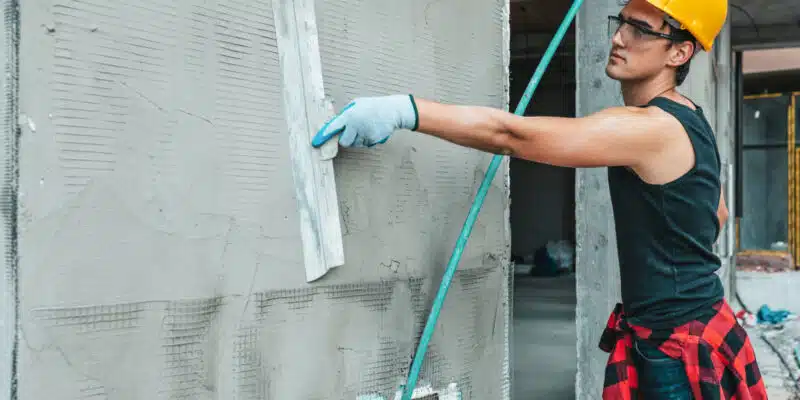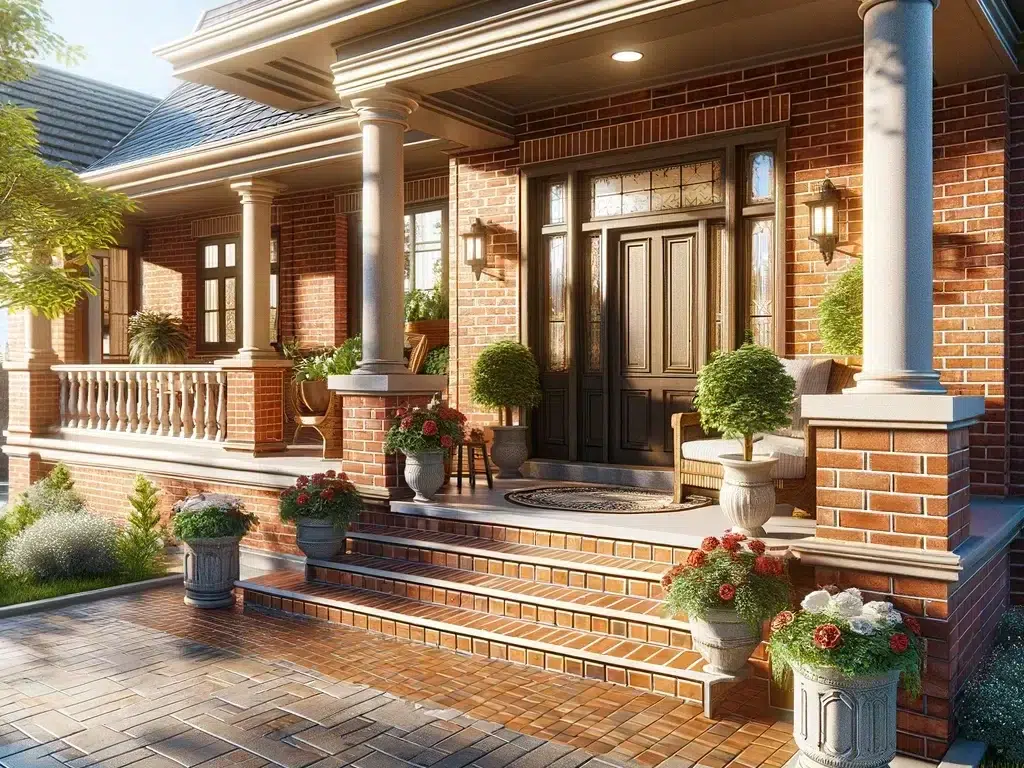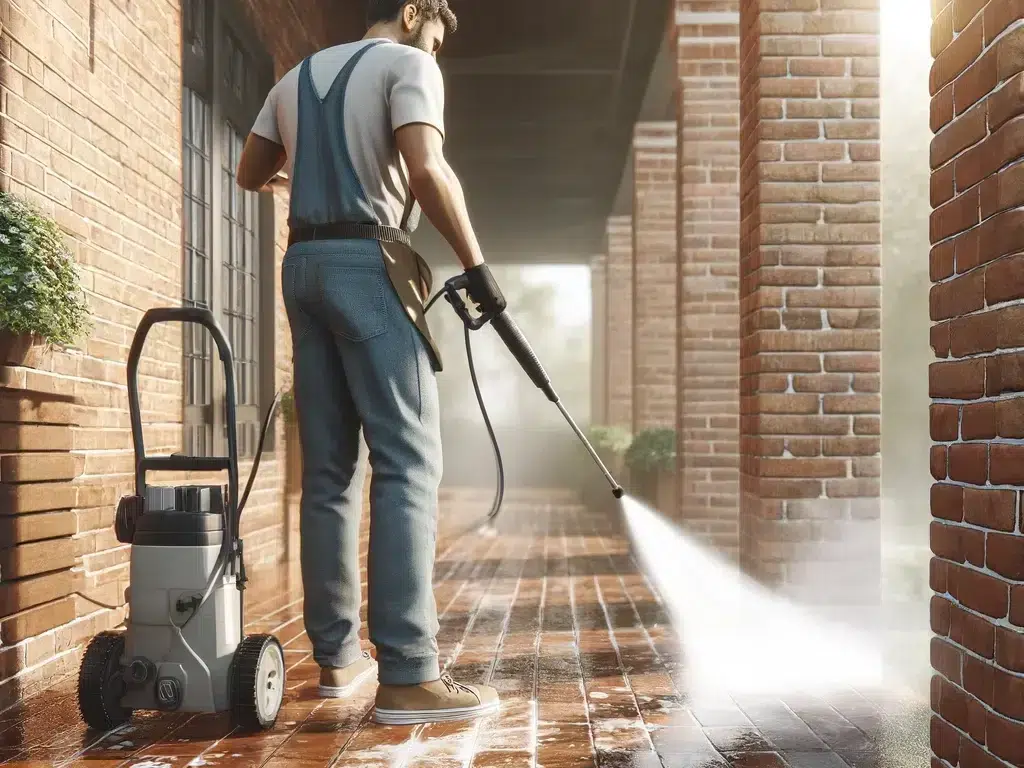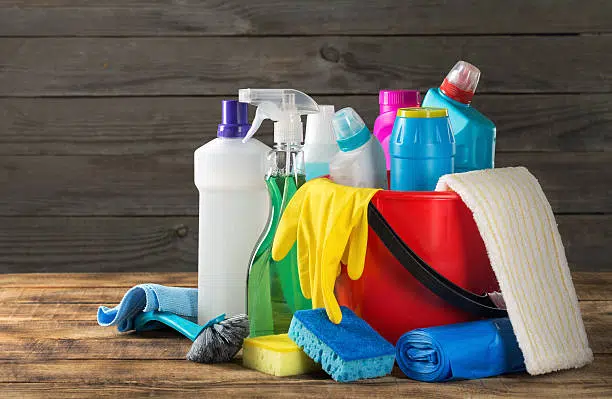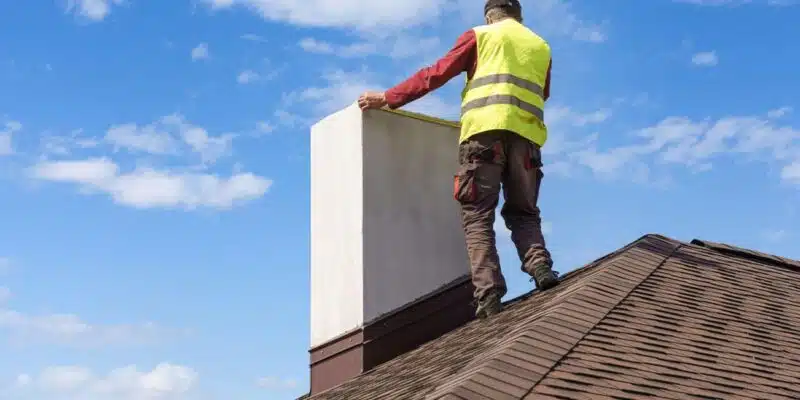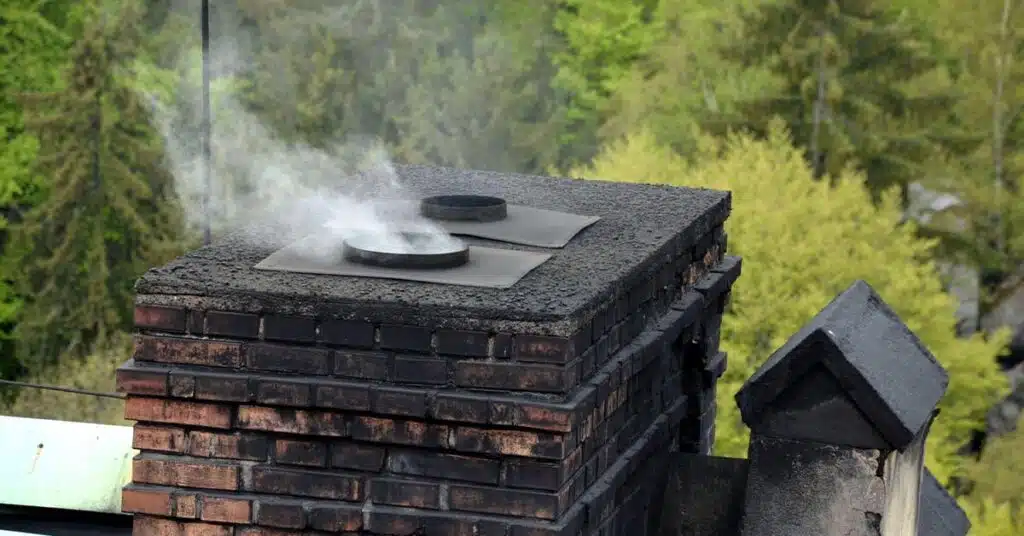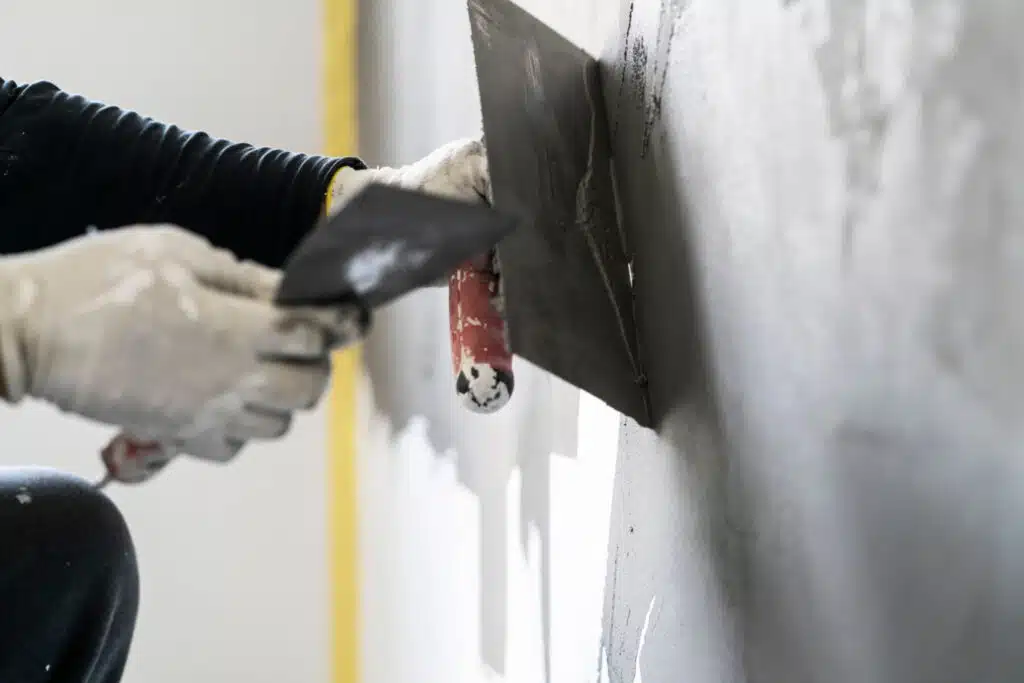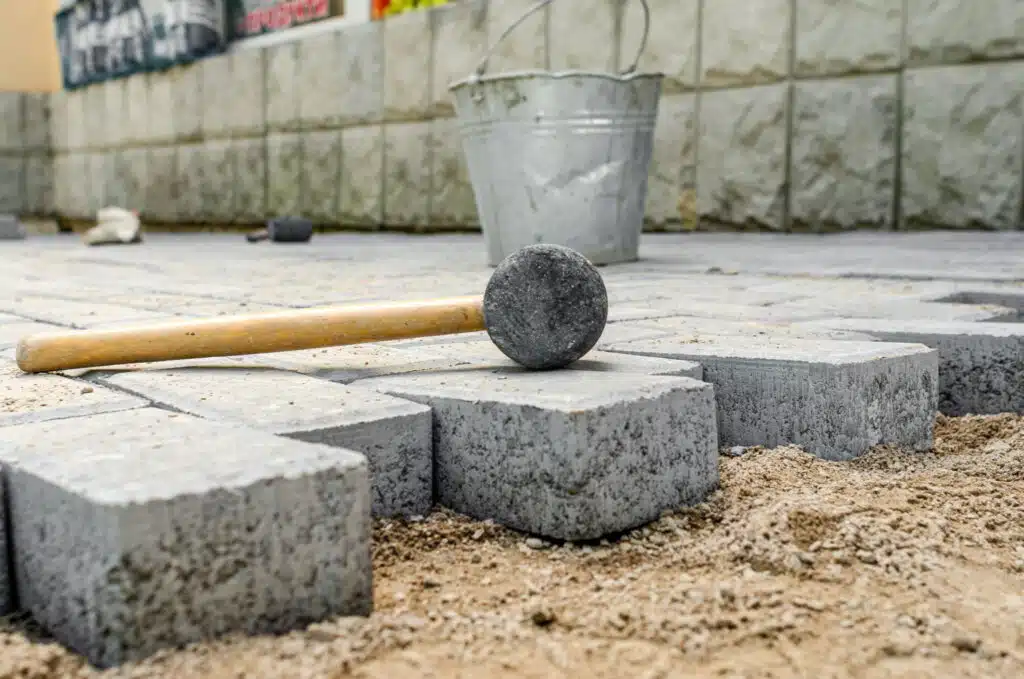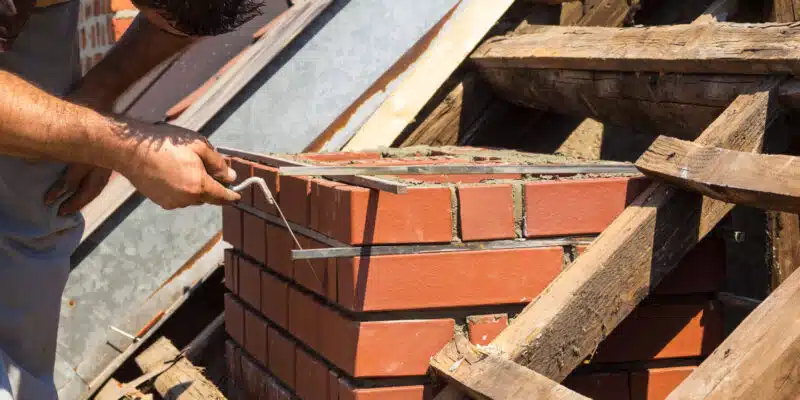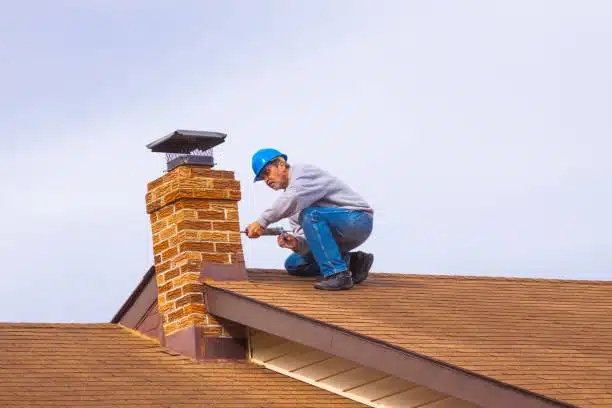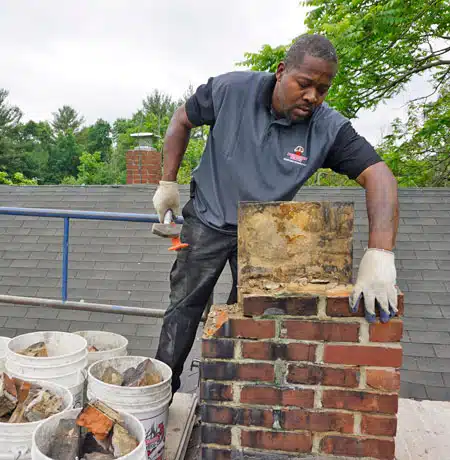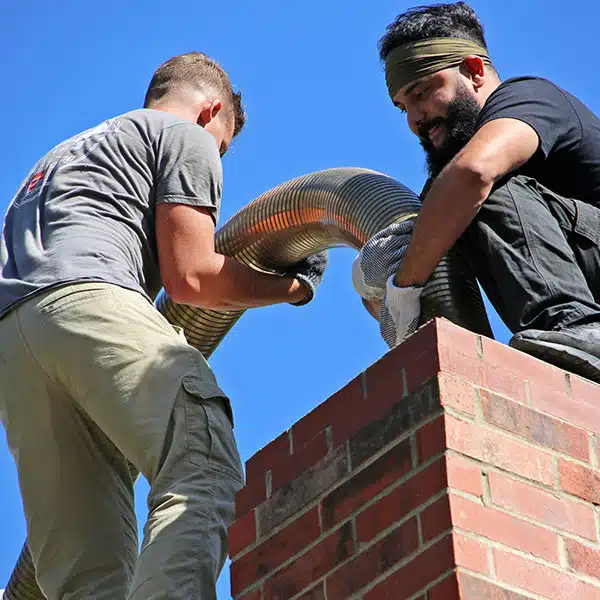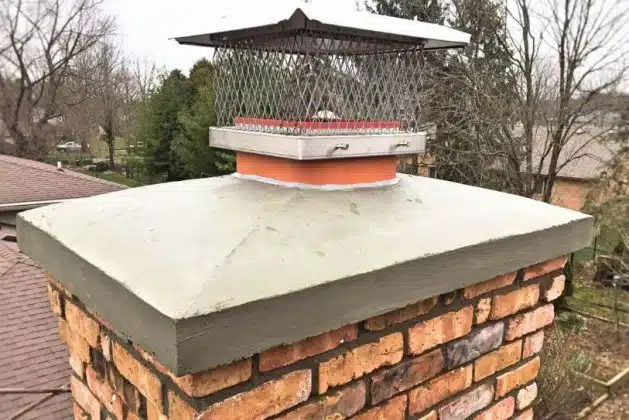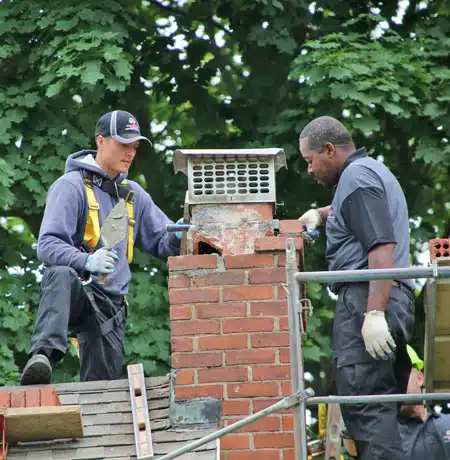Tuckpointing refers to the repair or replacement of mortar joints in brick. Tuckpointing is the act of packing mortar into damaged joints using a tool called a -tuck pointer. The structural integrity of brick walls is dependent on mortar joints. Mortar joints are essential for brick walls’ structural integrity.
They keep water out, hold the bricks together and bear the wall’s compressive weight. The mortar is the weakest link in the brick wall and is intended to deteriorate quicker than the brick. You may be able to repair mortar and not have to replace damaged brick later.
What is Tuckpointing?
Tuckpointing refers to the repair or reinforcement of mortar joints in brickwork. Mortar joints are spaces between bricks that have been filled with cement, sand, and water. Mortar joints can crack or become crumbly over time due to weathering and structural movement.
Tuckpointing strengthens mortar joints and improves brickwork’s appearance. A clean, neat joint will be free from debris. It will be the same color and style as the rest brickwork.
Why is Tuckpointing Important?
Tuckpointing has both aesthetic and functional benefits. Tuckpointing can strengthen mortar joints and prevent water damage. Tuckpointing can also improve brickwork’s aesthetics.
When Should Tuckpointing Be Done?
When mortar joints have cracked or become crumbly, tuckpointing should be performed. To ensure strong brick mortar joints and no defects, it is a good idea for new construction to have tuckpointing.
In 7 Easy Steps, How to Tuckpoint Mortar Joints
1. Inspection of the joint: Look closely at the joint that needs to be repaired. Check for cracks, gaps, or any other damage.
2. You can remove loose material by using a chisel or hammer. You must be careful not to cause damage to the bricks.
3. Clean the joint with a stiff brush.
4. Mix the tuckpointing mortar. Tuckpointing mortar is made up of cement, water, and sand. Mix the mortar according to the manufacturer’s instructions.
5. Fill the joint with mortar: Use a trowel or putty knife to fill the joints. Make sure you pack the mortar into the joint tightly.
6. Smoothen the joint with a damp sponge
7. Let the mortar dry: The mortar should dry for at most 24 hours before it is exposed to weather or wears.
Tuckpointing can be done in just a few hours. These seven steps will help you repair mortar joints or strengthen them.
How to Identify Mortar Joints that Need Tuckpointing
Mortar joints are spaces between bricks on a wall. These joints can crack or become loose over time. This allows water to seep into the mortar and cause damage. You may notice the following signs. Your mortar joints might need to be tuckpointed.
Mortar crumbling or flaking away
– The brick’s face is noticeably receded by mortar
– There are gaps between brick and mortar.
– Mortar can be stained or discolored
A professional can help you determine if your mortar joints should be tuckpointed. A professional will assess the mortar joints and recommend the best course.
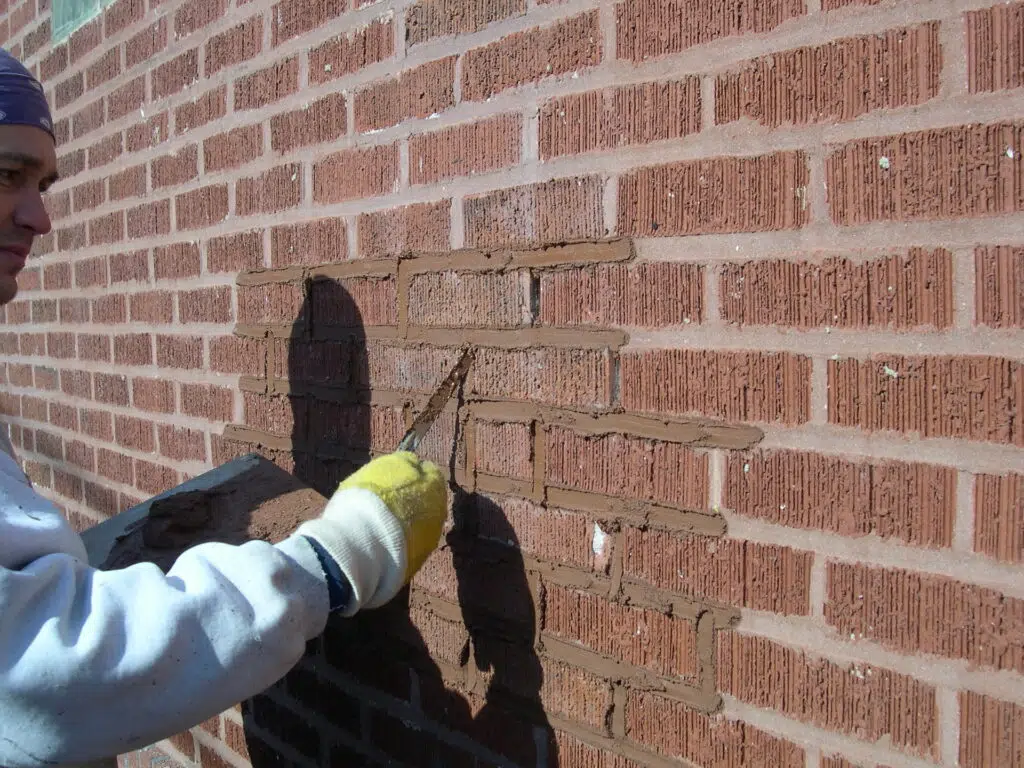
How to Tuckpoint Mortar Joints
Tuckpointing refers to the repair of mortar joints. Tuckpointing involves removing old mortar from joints and replacing it with new mortar. Although it is quite simple, tuckpointing can be time-consuming. These seven steps will help you tuckpoint mortar joints.
1. To remove old mortar from joints, use a chisel or hammer. To protect your eyes against flying debris, make sure you wear safety glasses.
2. Make sure to vacuum up all dust and debris.
3. Follow the manufacturer’s instructions to mix the mortar.
4. Place the mortar in a small bag and trim the corner.
5. The disposable bag can be used to pipe mortar into joints.
6. To smoothen the mortar, use a pointing tool.
7. Let the mortar dry for 24 hours before applying any stress.
It is an easy way to prolong the life of bricks and maintain your home’s beauty. You can make sure your bricks last for many years by investing a little bit of time and effort.
How to Prepare the Surface for Tuckpointing
1. Use a wire brush to remove all mortar and lose joints.
2. Clean out all debris from joints.
3. To prevent mortar from drying too quickly, wet the surface.
4. If necessary, bond the surface with a bonding agent.
5. Mix the tuckpointing Mortar
6. Tuckpointing Mortar
7. Finalization
How to Mix and Apply Mortar for Tuckpointing
1. Mortar is the glue between bricks, concrete blocks, and stones. It’s made from Portland cement, lime, and sand in different proportions.
2. To tuckpoint, the first step is to identify what type of mortar was used. This can be done simply by looking at the mortar’s color and hardness.
3. After you have identified the mortar type, you can mix up a batch that matches it.
4. Mix the mortar by first adding the dry ingredients (cement lime, sand, and salt) to a wheelbarrow.
5. Slowly add water and stir it into the mixture until it becomes peanut butter-like inconsistency.
6. Next, apply mortar to joints. You can use a trowel, or another tool to do this.
7. After the mortar has been set, smoothen it with a brush and take out any excess.
8. Before you can continue, allow the mortar to cure at least 24 hours.
9. Optional sealer can be applied to the joints. This will protect the joints from weathering and other damage.
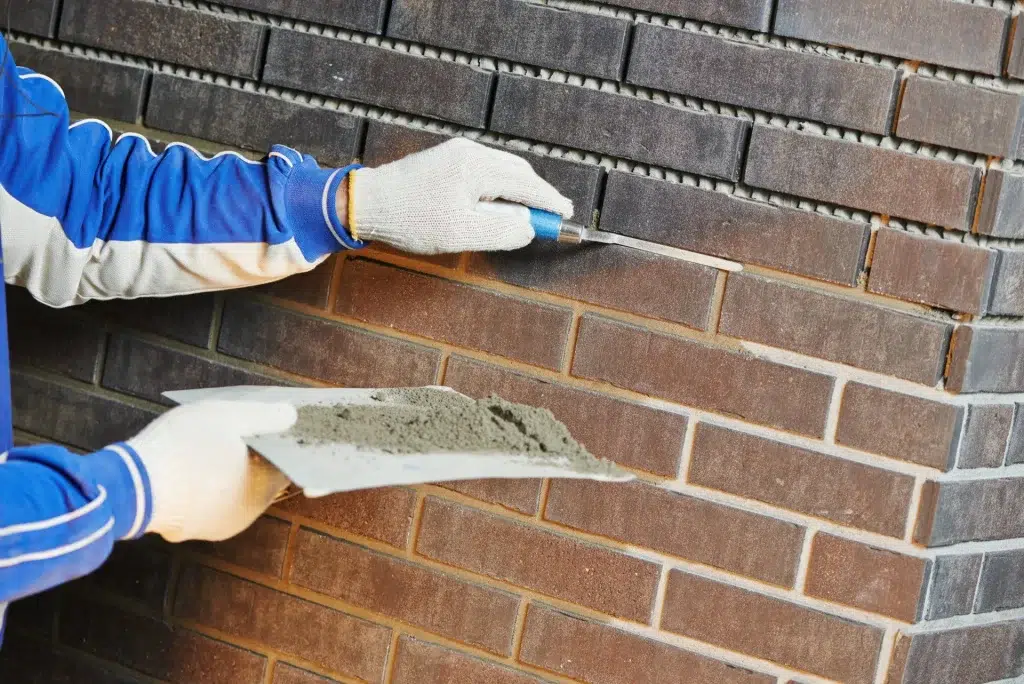
How to Finish the Tuckpointing Job
1. Use a wire brush to remove any Mortar that remains in the joints.
2. Mix a new batch of Mortar and spray it with water to wet the Mortar joints.
3. Use a putty knife to pack Mortar in the joints and then smooth it out. Don’t overfill the joints.
4. Before painting or staining the Mortar, let it dry for at most 24 hours.
5. To remove excess Mortar from bricks, use a wire brush.
6. If you wish, apply caulking to Mortar joints and let it dry completely before painting or staining.
7. Enjoy your new truck
Tips to Prevent Mortar Joint Failure in the Future
Mortar joints are an important part of any masonry structure. However, they are often neglected in terms of repair and maintenance. There are many reasons mortar joints may fail, but the most common reason is poor installation or poor mortar mix. Here are some tips to help prevent mortar joint failures in the future.
1. High-quality mortar mixes are essential to prevent mortar joint failure. A lower-quality mortar mix or one that is less durable will result in a weaker joint and more likely to crack and fall apart.
2. Make sure you install control joints correctly – Control joints are placed in masonry structures to control cracking and allow for cracks to form. If they aren’t installed correctly, they can cause more damage than good. Control joints must be installed correctly and at the right depth.
3. Avoid overworking the mortar. Once the mortar has been placed, it is important not to overwork it. Overworking mortar can make it less resilient and more likely to fail. To avoid damage to mortar joints, keep the float at a low angle when troweling Mortar.
4. Proper curing techniques are important – Once the Mortar is installed, it’s essential to properly cure it in order to preserve its strength and durability. For the first few days following the installation, you can mist the Mortar several times per day with water. This will allow the Mortar to cure evenly and slowly, and prevent cracking or other damage.
5. Regularly inspect Mortar joints – Mortar joints must be inspected for signs of damage and deterioration on a regular basis. To prevent further damage, any problems should be addressed immediately.
These tips will help you prevent mortar joint failures in the future. They will also keep your masonry structure looking great for many years.
Frequently Asked Questions
- What is Tuckpointing, and Why Does Your Home Need It?
- Tuckpointing is the art of filling in or repairing the mortar joints between bricks, vital for your home’s structural integrity. This preventive maintenance task is critical as it seals out water, binds bricks firmly, and bears the wall’s weight, prolonging your home’s lifespan and curbing the need for extensive brick replacement later on.
- How Can You Tell if Your Mortar Joints Require Tuckpointing?
- If you observe mortar crumbling away, bricks recessing behind the mortar line, visible gaps, or discoloration in the mortar, it’s time for tuckpointing. Addressing these early signs can avert more severe damage and expensive repairs down the line.
- When is the Best Time to Undertake Tuckpointing?
- Tuckpointing should be on your to-do list when you spot cracks or when the mortar begins to crumble. Not only does timely tuckpointing reinforce structural stability, but it also ensures your brickwork remains unblemished and robust from the start in new constructions.
- Is Tuckpointing a DIY Project, or Should You Call the Pros?
- While tuckpointing may seem straightforward, it’s a nuanced task best left to professionals. Expert masons have the tools and techniques to perform the job correctly, ensuring a finish that matches your home’s original brickwork and mortar, both in strength and style.
- What Steps are Involved in Tuckpointing Your Mortar Joints?
- Professional tuckpointing includes joint inspection, removing loose mortar carefully, thorough cleaning, creating the right mortar mix, filling and packing joints with precision, smoothing, and allowing the mortar to set and cure properly. This meticulous process ensures lasting results and a seamless look.
- How Do You Maintain Mortar Joints After Tuckpointing?
- Prevent future mortar joint issues with quality mixes, correct control joint installation, avoiding overworking mortar, using proper curing techniques, and regular inspections for early detection of problems. These practices ensure your masonry remains in peak condition for years to come.

